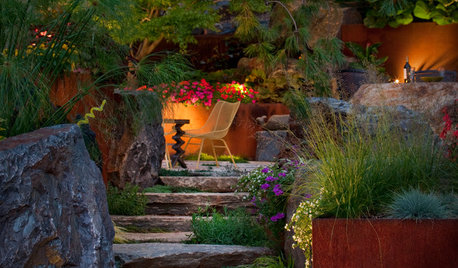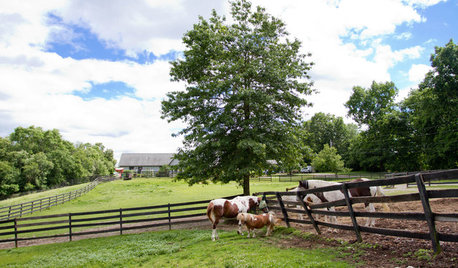Rehabilitating a degraded small acreage in the wilds of suburbia
luisa
17 years ago
Related Stories

LANDSCAPE DESIGNRediscover Your Inner Child With a Garden Wonderland
Bring the joy and curiosity of childhood to your grown-up garden, designing your plantings, materials and structures with wonder in mind
Full Story
GARDENING GUIDESBackyard Birds: Create a Home for American Kestrels
These copper-colored birds of prey can be found throughout North and South America and often find habitats near human activity
Full Story
GARDENING FOR BUTTERFLIESGarden for Wildlife to Reap Rich Rewards
When you plant with animals and insects in mind, you make gardening easier, the planet healthier and yourself more present
Full Story
GARDENING GUIDESHouzz Call: What’s Your Favorite Backyard Beauty?
The simple, honest daisy is this writer’s go-to garden flower. We want to hear which plant, flowering or otherwise, gives you special joy
Full Story
HOUZZ TOURSHouzz Call: Show Us Your Farmhouse!
Bring on the chickens and vegetable patches. If your home speaks country, it might appear in a featured ideabook
Full Story
LANDSCAPE DESIGN15 Great Ideas for a Lawn-Free Yard
End the turf war for good with hardscaping, native grasses and ground covers that save water and are easier to maintain
Full Story
GARDENING GUIDESLessons in the Rewards of Selfless Gardening
Let go of gardening for your own vision and watch the garden’s own true vision come forth
Full Story
PETSHow to Help Your Dog Be a Good Neighbor
Good fences certainly help, but be sure to introduce your pup to the neighbors and check in from time to time
Full Story
EXTERIORSWhere Front Yards Collide: Property Lines in Pictures
Some could be twins; others channel the Odd Couple. You may never look at property boundaries the same way again
Full Story
FALL GARDENING7 Reasons Not to Clean Up Your Fall Garden
Before you pluck and rake, consider wildlife, the health of your plants and your own right to relax
Full Story





gardenlen
luisaOriginal Author
Related Professionals
Danbury Landscape Architects & Landscape Designers · Rancho Palos Verdes Landscape Architects & Landscape Designers · Edmond Landscape Contractors · Darien Landscape Contractors · Hilton Head Island Landscape Contractors · Siloam Springs Landscape Contractors · South Lyon Landscape Contractors · Twin Falls Landscape Contractors · West Orange Landscape Contractors · Casselberry Landscape Contractors · Saratoga Springs Siding & Exteriors · Glen Avon Solar Energy Systems · Lockhart Solar Energy Systems · Bel Air Solar Energy Systems · Inver Grove Heights Solar Energy Systemsjoel_bc
gardenlen
luisaOriginal Author
luisaOriginal Author
luisaOriginal Author
gardenlen
gardenlen
luisaOriginal Author
gardenlen
luisaOriginal Author